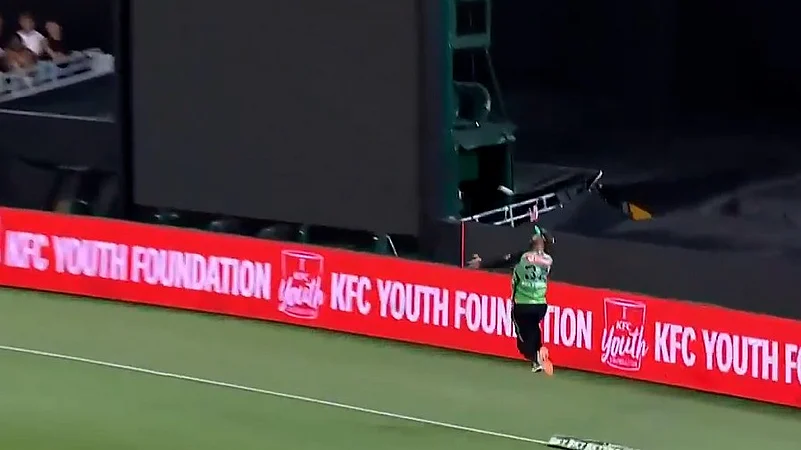Spectacular boundary catches like those pulled off by Michael Neser and Tom Banton in past Big Bash League (BBL) seasons will soon be a thing of the past under new law changes set to be adopted by the ICC this month and formally written into MCC’s Laws of Cricket in October 2026.
The revisions come in response to rising debate over the fairness of “airborne” boundary fielding — plays where fielders, like Neser, jump from inside the field, touch the ball mid-air beyond the boundary, and continue the sequence before eventually completing the catch inside the ropes.
Under current Law 19.5.2, such efforts are legal if the fielder’s last contact with the ground before first touching the ball was within the boundary and they do not touch the ball and the ground outside simultaneously.
However, following recommendations from the ICC cricket committee, the MCC has acknowledged that these “bunny hop” catches, while technically legal, feel out of step with the spirit of the game. Referring specifically to Neser’s 2023 catch — where he palmed the ball mid-air twice outside the boundary before regrounding to complete the play — the MCC said, “While it fulfilled the law, it felt like the fielder had — quite literally — gone too far.”
The MCC stated: “Our solution has been to limit any fielder who has gone outside the boundary to touching the ball while airborne only once, and then, having done so, to be wholly grounded within the boundary for the rest of the duration of that delivery.”
This change also applies to relay catches. A fielder can no longer repeatedly touch the ball while airborne outside the rope, even if assisting a teammate inside the field. If the fielder lands outside or subsequently steps out, it will be deemed a boundary
While the ICC will incorporate this into its playing conditions starting June 17 — during the Sri Lanka vs Bangladesh Test — the MCC will formally encode the law during its next revision cycle in October 2026.














